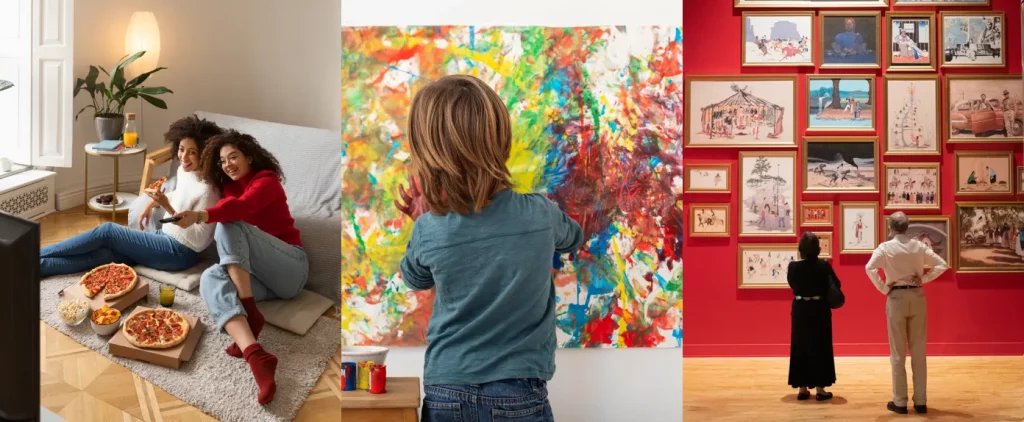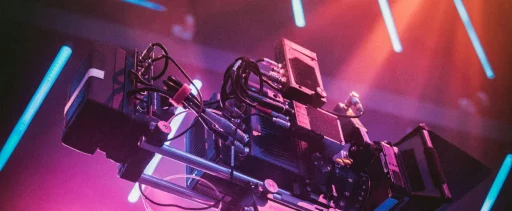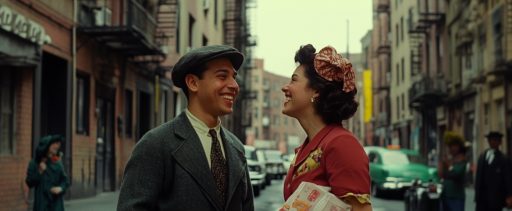Every November, America takes a moment to honor a story that’s far older than the nation itself. Long before the first settlements, treaties, or borders, the land was already home to hundreds of nations, each with its own language, rhythm, and worldview.
According to the U.S. Census Bureau (2020), more than 1.5 million people identified as Cherokee, making it the largest American Indian population group in the United States. The Navajo Nation, with over 315,000 members, remains one of the strongest Indigenous communities in North America. In total, about 9.7 million people identified as American Indian and Alaska Native, alone or in combination with other races. Those numbers are a reminder that Native cultures are not historical footnotes, but enduring, evolving presences in modern life.
From independent filmmakers reimagining Native representation on screen to artists revitalizing traditional languages through song and performance, Native American Heritage Month offers an opportunity to see American culture as a shared space, with an open invitation to tune in, to learn, and to experience America through the eyes of its first storytellers.
History of the Native American Heritage Month Celebration
The month-long celebration was officially established in 1990, when President George H. W. Bush signed a resolution recognizing November as National Native American Heritage Month. But efforts to secure recognition began much earlier — as far back as 1915, when Reverend Sherman Coolidge (Arapaho) and historian Arthur C. Parker (Seneca) called for a day to honor the “First Americans.”
Their vision took decades to materialize. The movement expanded from a single day to a week in the 1970s, and finally to a full month, a symbolic shift toward visibility, understanding, and acknowledgment.
To understand why recognition matters, it helps to remember the deeper history. Before European colonization, over 600 tribes thrived north of the Rio Grande, each with its own beliefs and traditions. Disease, forced relocation, and assimilation policies devastated those populations, but not their identity. Today, 574 federally recognized tribes remain across the U.S., and many are leading efforts to restore what was nearly lost.
Language is central to that revival. There are programs like Native Language Preservation and Maintenance and the Esther Martinez Initiative that fund projects that keep tribal languages alive. Across schools and online spaces, younger generations are learning ancestral words, sometimes for the first time in their families in over a century.
Today, the month invites all of us to reflect on a simple truth: Native American history is American history.
The Industry Gap
Despite centuries of displacement and cultural suppression, Native communities have preserved their connection to language, land, and spirit.
Unfortunately, for much of film and television history, Native peoples have been misrepresented, reduced to stereotypes, or erased altogether. When Indigenous characters did appear, they were often confined to the past, portrayed as relics of history instead of as part of the modern world. That limited view distorts public perception and shapes how society sees Native communities today.
According to IllumiNative’s 2022 study “The Time is Now: The Power of Native Representation in Entertainment”, the picture is drastic:
- Native people appear in only 0–0.4% of major films and television shows.
- Native women make up just 0.4% of screen time in streaming content.
These gaps are not invisible to viewers:
- In the same study, 94% of Native audiences said they notice when Native people are missing from popular media.
- 96% of Native audiences said that misrepresentation directly impacts how they feel about themselves and their communities.
Yet, the audience’s appetite for authentic stories is clear: 78% of Americans said they want to see more Native stories on screen.
Naturally, Native stories deserve to be told without filters, simplification, and speaking over. While streaming platforms have made modest progress in showcasing Indigenous creators, traditional Hollywood still lags behind. Viewers are ready, what’s missing is consistent access, fair investment, and trust in Native creators.
At UVOtv, we’re actively trying to close this gap. Our platform was built to give underrepresented voices, including Native and Indigenous storytellers, a home where their work can reach global audiences without compromise. If you’re one of them, join us as a creator.
Reclaiming the Narrative for Native Americans in Media
For generations, Indigenous people were spoken about, not listened to.
For much of modern history, Native identity was defined by outsiders. Textbooks, Westerns, and advertising campaigns reduced entire nations into convenient tropes. IllumiNative, a Native-led organization that works to increase the visibility and influence of Native peoples in American society, identifies recurring tropes to avoid:
- The Stoic Warrior — emotionless, mystical men serving white protagonists.
- The Vanishing Indian — characters framed as the last of their kind.
- The Guide — a wise helper advancing someone else’s story.
- The Oversexualized Woman — women shown as objects or victims.
- The Poor or Lazy — communities are portrayed as helpless or dependent.
- The Exotic — culture treated as a primitive decoration.
For centuries, mainstream American imagery treated Native peoples as relics of the past. These images made Indigenous cultures look frozen in time, stripping away individuality and voice.
Programs like BackStory’s “Imagined Nations” (2014) traced how early European art, advertisements, and even educational media reinforced this idea—presenting Indigenous culture as already disappeared. These images were inaccurate and embedded nostalgia for a myth that never existed. Scholar Dr. Rosemary Ackley Christiansen (Chippewa) has spoken about how rejecting these labels became part of reclaiming her sense of self.
For Native youth in particular, seeing their communities portrayed as relics of the past can create a quiet kind of harm, like internalized marginalization, a belief that their culture is secondary or disappearing. The opposite is also true: visibility heals. When the media depicts real Native life, it strengthens pride and a sense of belonging.
After generations of being portrayed through others’ lenses, Native artists began taking control of how their stories were told. In the 1970s, Phil Lucas (Choctaw) and Will Sampson (Muscogee Creek) challenged Hollywood stereotypes through their series about Indians. Later, creators like Greg Sarris (Miwok) and Joy Harjo (Muscogee Creek Nation)—the first Native American U.S. Poet Laureate—continued that work through storytelling, film, and poetry that centered lived experience instead of outsiders’ imagination.
How to Celebrate and Support Indigenous Heritage

For many Native communities, storytelling is a form of healing. As Native Hope, a non-profit organization that works to empower Native Americans, describes it, storytelling creates “unity, generational healing, and personal growth.”
According to IllumiNative’s Industry Guide (2022), accurate representation in film and television starts with authorship. Stories told by Native creators are inherently more authentic and respectful. True inclusion means involvement across every stage of production.
So, if you’re a creator or a filmmaker of any kind, this guide lists best practices that can directly shape film and TV development.
Do:
- Hire Native writers, directors, and producers from the very beginning.
- Show contemporary Native life: families, professionals, humor, and everyday joy.
- Specify tribal affiliations instead of using generic “Pan-Indian” imagery.
- Include Native talent even in non-Native storylines to normalize presence.
- Build multidimensional characters with agency, contradictions, and humanity.
Don’t:
- Cast non-Native actors in Native roles (“redface”).
- Lean on stereotypes like the “noble savage” or “magical Indian.”
- Use Native consultants as token advisors.
Each action helps keep these voices alive, not just for one month, but year-round. Respect is non-negotiable:
- Cultural practices, regalia, sacred objects, and traditional stories require permission and consultation.
- Depicting ceremonies or sacred items (totems, headdresses, songs) without tribal consent constitutes cultural appropriation.
- Native storytellers need to be not only consultants but decision-makers.
- When portraying Native women, avoid leaning into symbols like voiceless victims or exoticized figures’ tropes–e.g., assaulted, murdered, or in love with a ‘white savior’ trope.
- Hire Native talent for executive and creative leadership roles.
- Fund and develop original projects by Native creators.
- Track and report inclusion metrics for transparency.
Finally, if you’re a cinema lover, you can turn to platforms that prioritize cultural authenticity and feature indie creators. On UVOtv, you can watch independent films from underrepresented creators in 40+ languages for free.
Why Native American Heritage Month Still Matters
We’re living in a moment where authentic voices have more space than ever before. The opportunities are there to not just include Native perspectives, but to let them lead. Because Native peoples are more than their trauma, they are artists, innovators, and storytellers with worlds to share. And as audiences have already shown, the appetite for those stories is only growing. Listening is one of the simplest forms of respect.
Celebrating Native American Heritage Month is a reminder that Indigenous cultures are not relics of history. Their languages are being spoken again, and their films are reaching global audiences. As the Muscogee Creek poet Joy Harjo said, “The stories don’t stop. They keep going in circles of motion.”Filmmakers and actors like Phil Lucas, Greg Sarris, and Hanay Geiogamah have shown how storytelling can reclaim space, not just as protest, but as preservation of humor, creativity, and spiritual continuity. Their work reflects the same mission we hold at UVOtv—to create visibility for voices too often left out of the mainstream. We support underrepresented creators by giving independent films a global stage—feel free to explore international cinema here.





